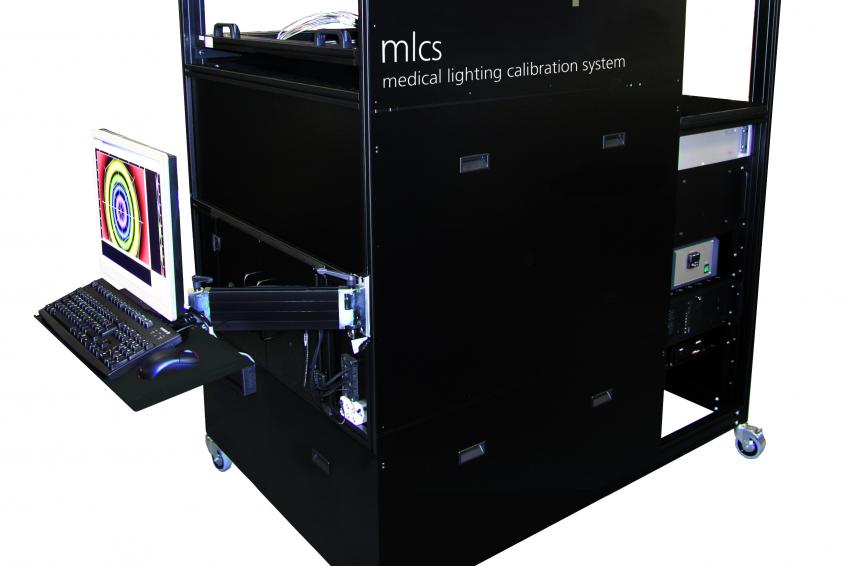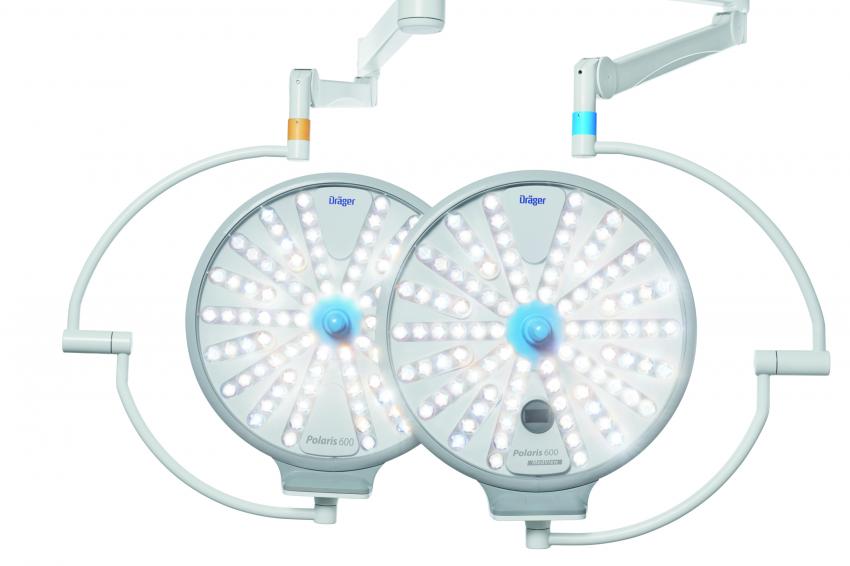Test System for Medical Technology
Test Bench and Test Concept for Surgical Lights
Strict standards apply to the lighting in operating rooms because it contributes significantly to safety during medical procedures. Quality measurements are therefore an essential part of the end-of-line test. For its Polaris 600 family of OR lights, the manufacturer Dräger has developed a new test stand together with light measurement specialist Opsira. “Among other things, Polaris offers the possibility of adjusting the color temperature to match the tissue,” explains Matthias Brauer, Industrial Engineering Medical Lights and Video at Dräger. “In order to fully test these functions, our equipment construction department has worked together with Opsira to develop a test concept which we have been using successfully since the introduction of the lighting.”
Test Bench Developed into the Product
When the luminaires in the series came out of product development, the test engineers faced a special challenge for the end-of-line test. The luminaire’s new features could not be verified with conventional measurement technology. “The luminaire brings together a number of things that are not otherwise available on the market,” Brauer said. “The variable color temperature is a key feature, as is the adjustment of different light field diameters.” In addition, a camera is integrated into the luminaire, with the camera and receiver connected wirelessly. The medical and safety equipment manufacturer was thus looking for a reliable testing concept that would enable it to comply with the standards. “We have been working with Opsira for more than 15 years,” Brauer notes. “Measuring light is a complex matter, and we have very complex requirements.” The cooperation in terms of test stand design also went smoothly: the production equipment engineering department at Dräger took over the software development, while Opsira contributed system expertise and hardware to the project. Finally, a prototype of the test bench was developed that covered all measurement processes. “The final test stand was ready on time for the launch,” says Brauer.
User-Friendly and Functional
When developing the test stand, the two companies had three main aspects in mind – the user, the focus on the features of the new luminaire, and the elaboration of a process-safe measurement sequence. “For other luminaires, we use different assembly tables for individual test steps, so the luminaires have to be transported from table to table,” Brauer said. For the Polaris 600, an assembly trolley was designed that the user pushes into a test chamber where all measurements take place – which is much easier and more ergonomic to handle. With regard to the measurement technology, new paths also had to be taken to meet all the requirements: “To ensure the necessary parameters, we work with sensors and a high-quality class L photometer in combination with a white surface as well as defined radii,” explains Brauer. In addition, a spectrometer checks whether the color temperature of the luminaire can be set correctly. The measurement process is designed to test all relevant parameters quickly and without errors, which are guaranteed to the customer.
“The whole thing is a partially automated measurement sequence that protects against user errors,” Brauer says. Upon successful completion, the user receives a calibration protocol and approval. The measurement time is also very short. “The faster our processes are, the faster we get our product to the customer – but we don’t compromise on quality in any way,” Brauer notes. “We perform the 100 percent final inspection before it goes into the OR. There’s zero margin for error there.” Since the testing concept is successful, it will continue to help deliver Dräger luminaires of high quality on time in the future.
Author
Jürgen P. Weißhaar, Managing Director
Contact
Opsira GmbH
Leibnizstr. 20
88250 Weingarten
Germany
+49 751 561890
+49 751 561899








